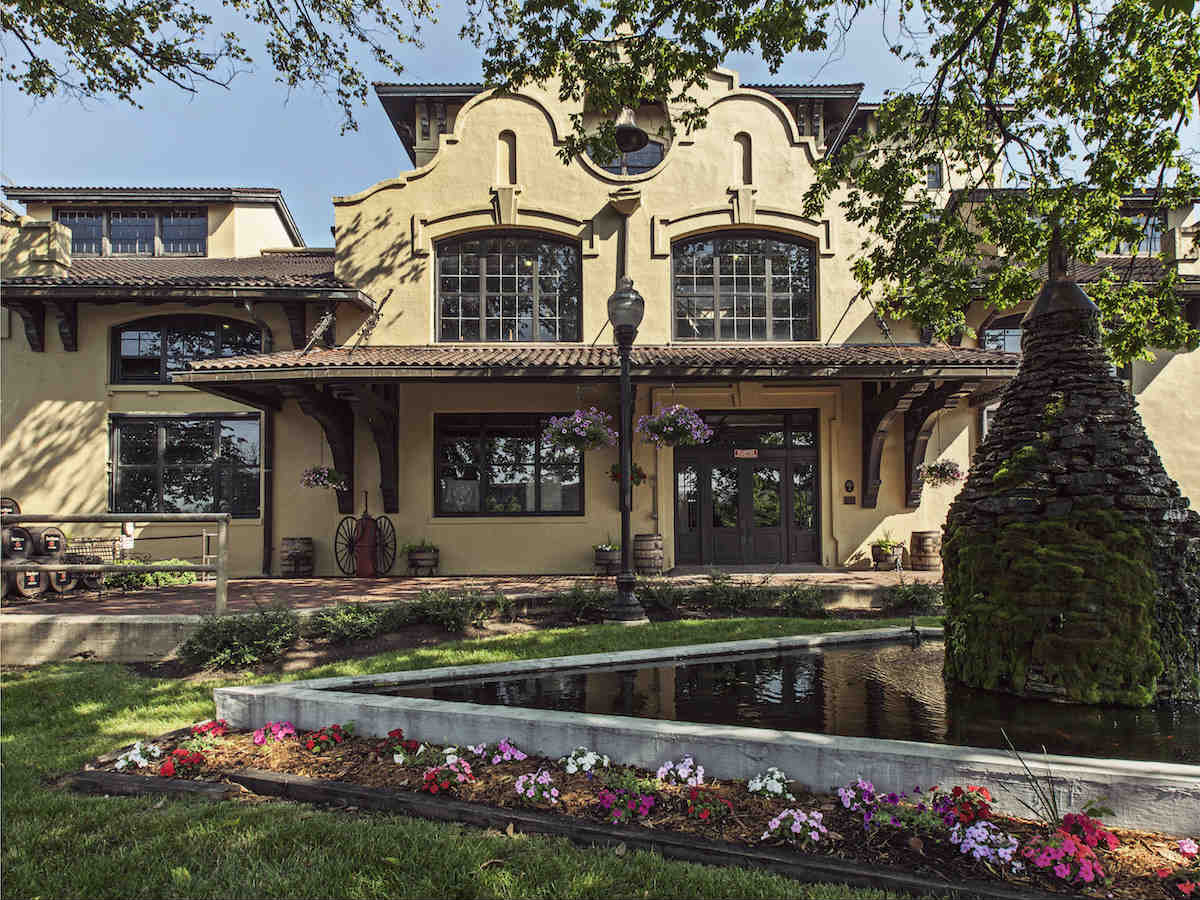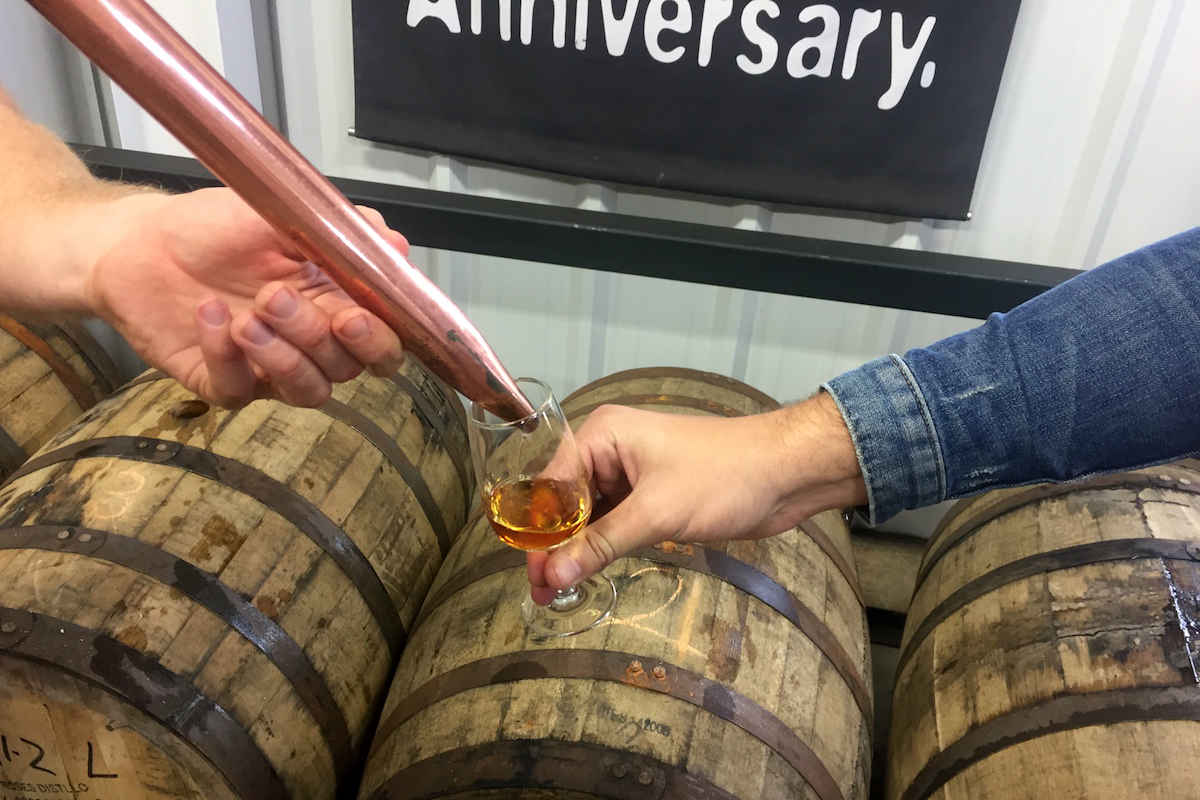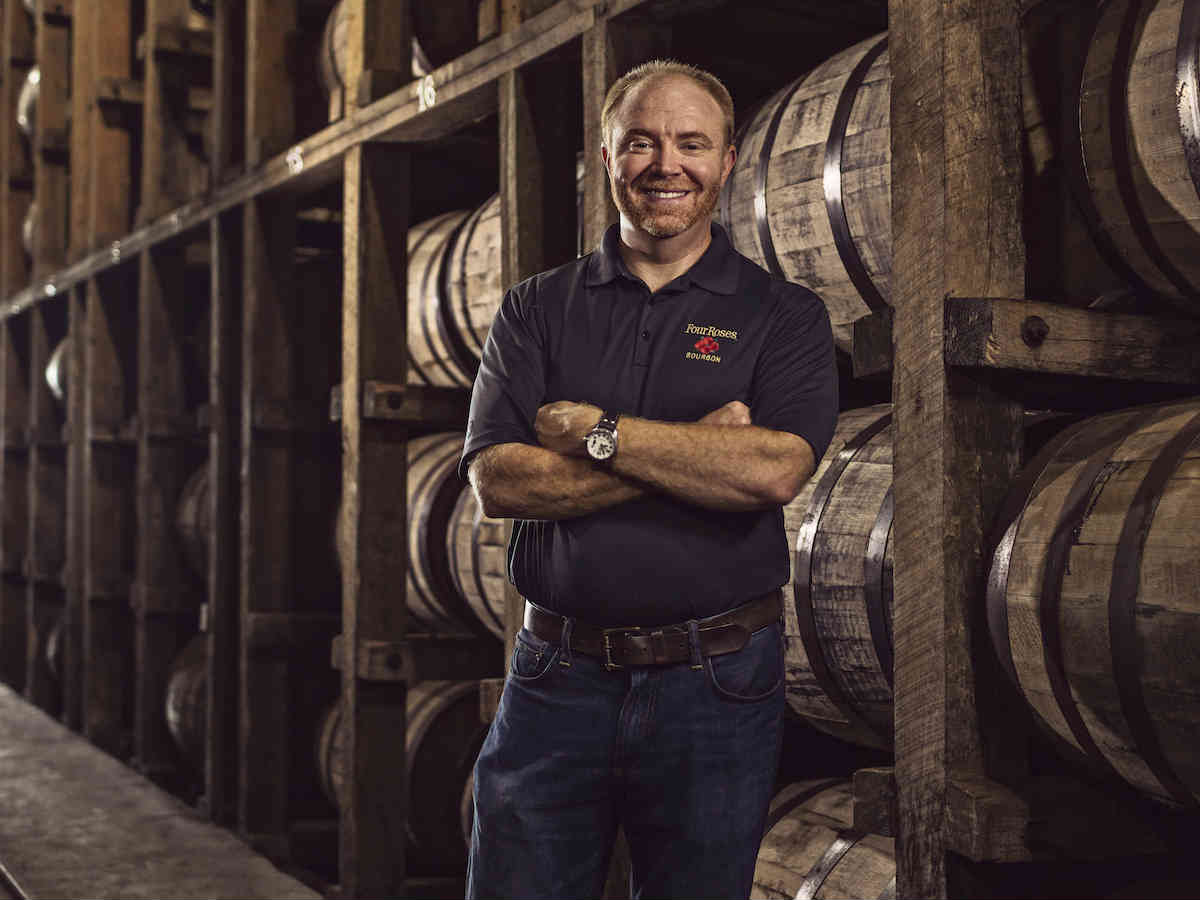It’s not easy to get your hands on a tortilla chip at the Four Roses warehouse and bottling facility in Cox’s Creek, Kentucky. The salty triangles serve as the de-facto snack and palate cleanser for the distillery’s private barrel selection process, which is typically accessible only to the owners and accomplices of select bars and liquor stores.
I fit into neither of the above categories, but I am part of a small media group that’s been assembled into a sparse room with concrete floors, corrugated steel walls and a row of eight whiskey barrels waiting to be sampled. While I won’t be leaving with barrel of my own, I’ll be experiencing the ritual that matches 600 carefully selected barrels to retailers, bars, and a few lucky private individuals each year.
Four Roses Distillery

The Four Roses Distillery.
Four Roses has been making whiskey since 1888, and its long history comes with ups and downs. In 1945 it was purchased by Seagram’s, which moved it to export-only status in 1957. Four Roses gained traction in Europe and Japan (it’s still the highest selling bourbon in the Japanese market) but was virtually forgotten in America. In 2002 the brand was purchased by Kirin—which already held Japanese distribution rights—and was reintroduced to the domestic market. Today it sells three core expressions: Four Roses Yellow Label, Four Roses Small Batch, and Four Roses Single Barrel.
While Four Roses is not alone in offering private barrel selections, several unique features of the distillery makes its private barrel offerings particularly diverse.
Four Roses produces 10 distinct bourbon recipes. These are categorized by four-letter codes such as “OESK” or “OBSV.” “O” and “S” appear at the same place in each letter code. They stand for, respectively, “Old Apprentice,” which is the former name of Four Roses’s distillery in Lawrenceburg, and “Straight Bourbon.”
It is the second and fourth letters of each code that spells out the difference. Four Roses works with two mash bills, each of which contain five percent malted barley. Mash bill E also features 75 percent corn and 20 percent rye, while mash bill B dials the corn back to 60 percent and propels the rye to 35 percent.
That last letter indicates which of five proprietary yeasts were used to make the bourbon, which are lettered V, K, O, Q, and F. Each is assigned a different, two-word description in Four Roses literature, as follows: V for “delicate finish,” K for “slight spice,” O for “rich fruit,” Q for “floral essence” and F for “herbal notes.”
A blend of all 10 recipes is used to make Yellow Label, while a combination of OBSO, OBSK, OESO and OESK constitutes Small Batch. Single Barrel pulls from one recipe: OBSV.
The Private Barrel Process

My experience is to be led by Mandy Vance, manager of the private barrel program, and Marcus Neimann, who serves as Assistant Quality Manager. I’d like to learn a little more about the process, and ask Neimann how many clients they work with.
“Here’s a list of a good chunk of people we’ve done,” Niemann says, pointing toward a wall full of barrel staves engraved with the names of liquor stores and bars, a few of which I recognize from the Greater Boston Area.
“That don’t even put a drop in the hat,” Vance says. “I have some accounts that come every other year, I have some accounts that come every two years. I have some accounts who come every month.”
Demand is high. Four Roses’ sales team selects the new clients, says Vance, with liquor stores making up the majority of the clientele. While rare, private individuals sometimes take part—last year, Terry Bradshaw selected a barrel that was sold as part of a charity drive.
When the owners and operators of a store or bar attend a tasting, they often bring additional guests to help them select the barrel.
“People have different theories about what kind of groups they bring in with them,” says Neimann. “Let’s say they run a bar. They’ll bring in some of their favorite customers to give them a cool experience. Other times they’ll bring in their all-star crew, guys that all have great palates.”
Neimann’s seen some interesting tasters over the years. He recalls one liquor store that selected barrels based on how well they paired with the chocolates they also sold. Another group brought in a professional perfumist. A veteran taster recently astounded Neimann by correctly identifying nine out of the 10 recipes, right down to the yeast code, during a blind tasting.
The barrels used for the process are typically eight to 10 years old. The price for the barrel varies, as it’s based on how many cases can be bottled and the market in which it will be sold. Neimann mentions that a recent barrel produced just 13 bottles, though Vance has seen it drop as low as two. Once the bottles are delivered to a liquor store, they’re typically marked between $70 and $80 depending on the market.
Because each barrel has a different proof, the labels for the resulting bottles must be registered with the TTB (Alcohol and Tobacco Tax and Trade Bureau) for approval. This complication keeps the private barrel program a domestic affair. Aside from proof, the labels will also display the age of the mashbill, age, recipe, and sometimes the recipient’s name or logo.
The Private Barrel Tasting

Tasting bourbon right from the barrel. Photo: Eric Twardzik.
Before me is a white sheet of paper and eight snifter glasses. We walk our glasses over to Neimann, who fills them one-by-one from the selected barrels with a whiskey thief. Charred sediment finds its way into a few of the glasses.
Neimann advises us to taste our way through all eight at barrel strength, with some breaks and water in between to keep our taste buds from getting overwhelmed. Once we’ve sampled the range he recommends trying them again with a few drops of water.
I record my impressions of each on a piece of paper, and once I’ve finished, I rank them numerically. If not for the paper’s branded heading, it would be hard for a stranger to believe that all eight spirits came from the same distillery.
For instance, I mark barrel #3, an OBSQ, as having stewed fruits on the nose with cherries, berries, and a big, rich, oaky finish. In contrast, barrel #2’s OBSF makeup gives me brine and sherry on the nose, with a light, cool mouthfeel and a distinctly vegetal flavor.
My favorite proves to be #6, an OBSV with aromas of oak, cigar, and plum, and tasting notes of vanilla, cherry, and cigar box followed by a warm, drawn-out finish.
As I imagine the possibility of later breaking into the facility and heisting barrel #6 for myself, Neimann remarks on the almost impossible-seeming diversity reflected by our tasting notes.
“What I always compare this to is tasting a single barrel from five different distilleries in one room at the same time,” he says.
Weeks later I find myself browsing at Gordon’s Fine Wines and Liquors in downtown Boston. My eye catches a row of Four Roses Single Barrel bottles marked as “private selection” by a tag around the neck. I start checking labels, and discover an OESV, OESF, and OBSV. I grab the OBSV—barrel 50-5T, warehouse no. MW, 62.8% ABV—and proceed to the counter.
At home I compare it to the OBSV from the tasting, and find the major characteristics to be similar: the same sharp cherry sweetness and a dry, bold, cigar-chomper finish. I’ll get that whole barrel someday, but for now a bottle will do.
Photos courtesy of Four Roses unless otherwise credited.



